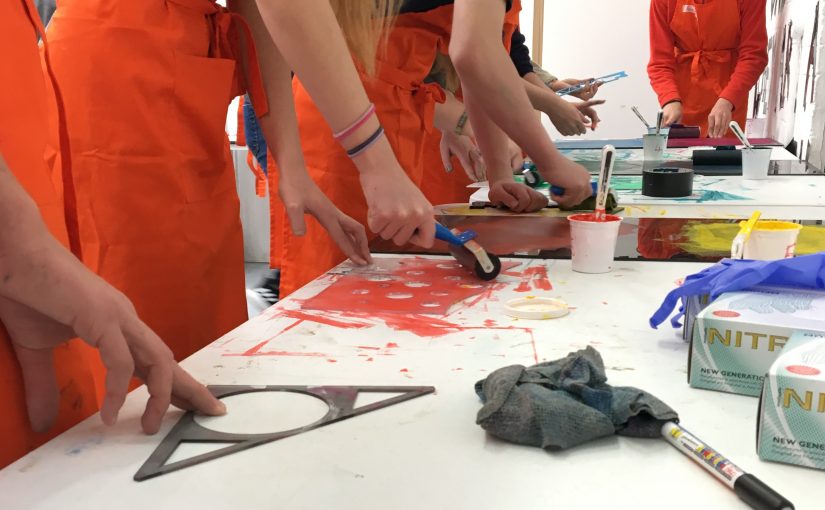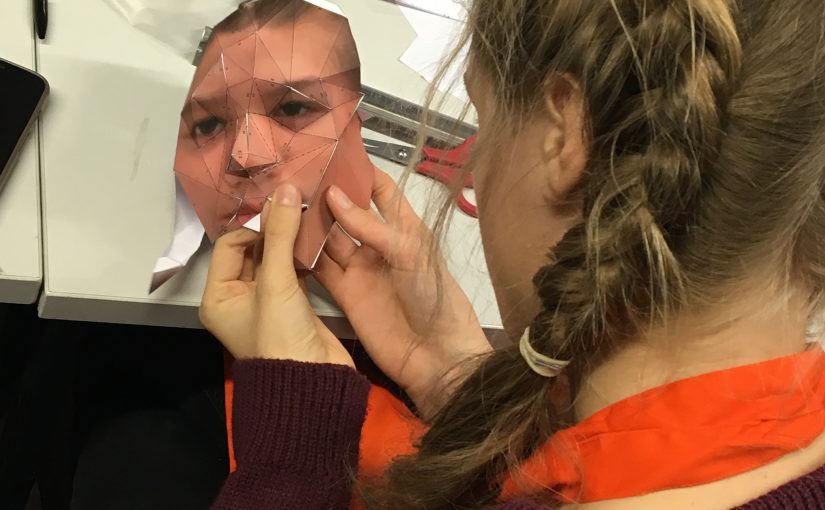This week we continued exploring yarn and knitting with knitwear designer and WSA tutor Antonia Sullivan.
We began by creating yarn using t shirts, we had all perfected this technique having practiced last week. Once we had an enormous mountain of yarn we got into groups and became a human knitting machine. Based on the principle of ‘French knitting’, usually using a cone with a central hole and a series of pegs to loop the yarn around, this time the pegs were replaced with people creating a giant web of yarn, which grew really fast once we had all worked out how it worked. We then displayed our finished lengths around the room creating a network of threads.
Moving from the collaborative to the individual, from the macro to the micro we scaled down and tried ‘hand knitting’ and ‘finger knitting’. These processes using no needles created fun quick results, particularly with the jumbo t-shirt yarn. We then battled with giant broom handle needles but the results were slower than the earlier techniques.
These were then added to the growing ‘installation’ in the room. Seeing the knitting in this way allowed you to understand the structure of the process and where different knitters had different ‘tension’ creating tighter or looser patterns.
It was a really hands on, playful, physical end to this terms’ series of workshops and we all felt proud of having mastered a new skill.






